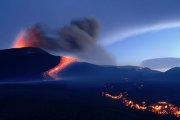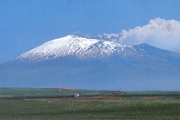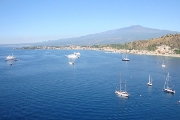Etna, the highest active volcano in Europe!



Etna is a large volcanic cone surrounded to the east by the Ionian Sea to the south with the Plain of Catania, to the west and north by the Nebrodi Mountains. The volcanic structure rises about 3,330 m above sea level, has a base diameter of about 45 km, a perimeter of over 160 kilometers and its lava, in more than 500,000 years, has covered an area of about 1250 square kilometers.
Currently, on the summit area, four different craters are opened with persistent activity, due to the continuous emission of gas, steam and ash, which sometimes becomes an activity of Strombolian type with intermittent throwing of magma shreds at considerable heights. The central crater, known as the "Gulf", is the largest of the four, with a diameter of more than 500 m.
In the last century, the geographical arrangement of the summit area has changed dramatically with the formation of three other craters. In 1911 the northeastern crater came from a small subsidence on the northeastern side of the central crater, at an altitude of 3100 m. In 1968 one third of the developed crater, referred to as "New Mouth" or "North Western Mouth", while the last to be born was the south-East, born in 1971 from a small subsidence on the southeast side of the central crater. Etna today is the largest active volcano in Europe.
Etna was included in 2013 in the Unesco "World Heritage List": a natural site World Heritage Site!